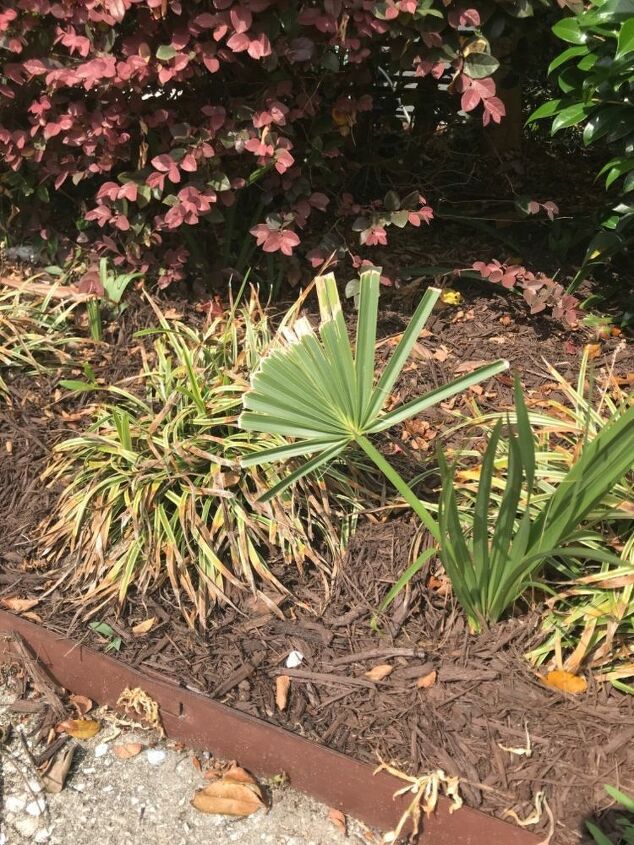How do you get rid of this stuff?
Related Discussions
GNATS - How to get rid of them?
Somehow my house and garden got tiny gnats that killed my fuchsia plant and fly everywhere. I have tried ALL the Web recommendations - soap and oil dishes, sand in th... See more
Marigolds growing! Should I pinch the buds?
My marigold plants are growing. I heard that pinching the buds until Autumn will allow them to grow without killing the plant. Is this true?
Growing garlic
Growing our first garlic, should we wait until the leaves are drying out before we pick it? Husband picked first one today along with our first potatoes.
How to keep mice out of your garden?
Hi everyone, I have mice in my garden destroying my vegetables and I have also noticed them in the barn and shed. Please can someone tell me how to prevent them from ... See more
What's the best flower/plant to grow in Texas?
I know that opinions vary, but what's your opinion?!I have great luck w Rosemary plants. Green all year long.
How do I get rid of white stuff on citrus trees?
My citrus trees have white stuff and I have teied so many things and nothing seems to work. Can you please give ma a home remedy for this?




Here’s an article on how to kill weeds and such with common household ingredients. Also...it’s non toxic.
https://garden.lovetoknow.com/wiki/Recipe_for_Vinegar_Weed_Killer
Dig it out NOW before it really takes root and becomes difficult to remove. Must have been spread by wind or wildlife. So sorry!
looks like Mexican Fan Palms they are trees... pull them out by hand when they are under 4-6"s(wet the ground they pull out easier)---spot spray each plant with Round-Up if they are bigger and cannot be pulled out---if main Palm is in your yard remove the spike that hold the seeds before they drop on ground,these seeds are huge source of food for birds and bees like both flowers and the seeds,if you have lots of new sprouts and no Palm tree they are being dropped by birds that have eaten the seeds elsewhere and perched above areathey are growing.
cool
It's Saw Palmetto. Spreads from growing underground from the mother plant. VERY invasive and SUPER hardy.
https://homeguides.sfgate.com/information-saw-palmetto-plants-44574.html
https://homeguides.sfgate.com/can-kill-palmetto-plant-90290.html
Kill Palmetto Plant with Chemicals
Herbicides containing triclopyr as the active ingredient can help control small saplings or suckers if applied as a foliar spray repeatedly about once every four weeks during the summer months. Four ounces of triclopyr are mixed with 1 gallon of water to cover 500 square feet. However, this option does little to kill the parent plant or stop the production of new suckers. For large areas and pastures, Texas A&M University AgriLife Extension recommends an herbicide containing dicamba, 2,4-D and metsulfuron methyl as the active ingredients applied in late summer to kill the palmetto plant. This herbicide generally comes in two parts that must be mixed together before diluting in water. For example, one brand requires mixing 5 ounces of part A and 2.5 gallons of part B to cover 10 acres. Application is made with an agricultural tank sprayer. Multiple applications of the herbicide may be needed to effective kill the plant; the method may not be practical for treating a smaller area.
Manual and Chemical Methods Combined
Another method to killing palmetto plants is to combine manual and chemical control options. This requires shaving the bark off the middle of the trunk around the plant’s entire circumference. Once you have removed a strip of bark at a height that you can reach comfortably, drill half way through the middle of the tree with a 5/16-inch drill bit. Insert the end of a plastic tube in the hole and attach the other end to a funnel. This will allow the chemical herbicide to enter the tree. Pour a mixture of 1/4 ounce of glyphosate-containing herbicide and 1/4 ounce of water into the funnel and allow the solution to drain into the hole. It typically takes several months before you see effects of the herbicide and the plant begins to slump.
That is a palmetto bush. Pour some kerosene (it was called coal oil when I was growing up) down the parts that lead to the roots. In 2-3 days you'll be able to pull it up by hand .